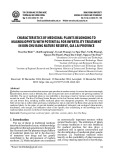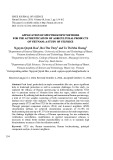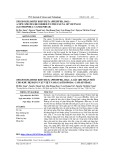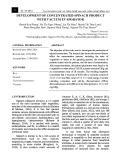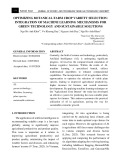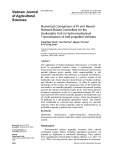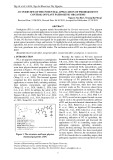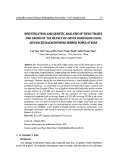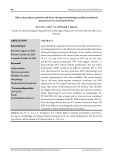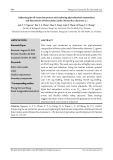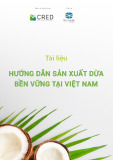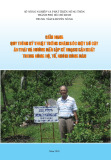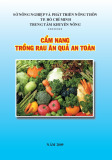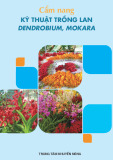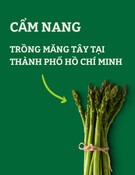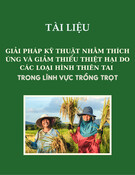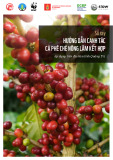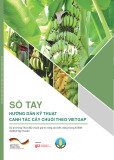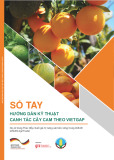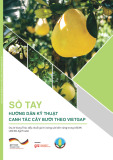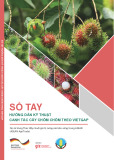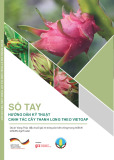
Int.J.Curr.Microbiol.App.Sci (2020) 9(4): 1888-1897
1888
Original Research Article https://doi.org/10.20546/ijcmas.2020.904.223
Production Potential of Summer Greengram [Vigna radiata (L) wilczek] to
Different Nutrient Management Practices under South Gujarat Condition
V. M. Patel1, K. A. Shah2* and Prabhu Nayaka3
1Department of Agronomy, Navsari Agricultural University,
Eru Char Rasta, Navsari 396 450, Gujarat, India
2Agronomy, Krishi Vigyan Kendra, Navsari Agricultural University,
Eru Char Rasta, Navsari 396 450, Gujarat, India
3Plant Protection, Krishi Vigyan Kendra, Navsari Agricultural University, Eru Char Rasta,
Navsari 396 450, Gujarat, India
*Corresponding author
A B S T R A C T
International Journal of Current Microbiology and Applied Sciences
ISSN: 2319-7706 Volume 9 Number 4 (2020)
Journal homepage: http://www.ijcmas.com
A field experiment was conducted during summer season of 2018 at the college farm,
Navsari Agricultural University, Navsari to study the “Production potential of summer
greengram [Vigna radiata (L.) Wilczek] to different nutrient management practices under
south Gujarat condition”. The soil of the experimental field was clayey in texture having
medium to poor drainage, low in available nitrogen and organic carbon and medium in
available phosphorus and available potassium. Total seven treatments viz., Control (T1),
FYM @ 2.5 t/ha + 100% RDF (T2), FYM @ 5 t/ha + 50% RDF (T3), FYM @ 2.5 t/ha +
50% RDF + spraying of enrich banana psuedostem sap @ 10 ml/l of water at branching
and 50 % flowering stage (T4), vermicompost @ 1 t/ha + 100% RDF (T5), vermicompost
@ 2 t/ha + 50% RDF (T6) and vermicompost @ 1 t/ha + 50% RDF + spraying of enrich
banana psuedostem sap @ 10 ml/l of water at branching and 50 % flowering stage (T7)
were tested in randomized block design with four replications. Most of the growth and
yield attributes viz., plant population at harvest, plant height at 60 DAS, test weight and
harvest index did not affected significantly by different nutrient management treatments.
An application of vermicompost @ 1 t/ha + 50% RDF + spraying of enrich banana
psuedostem sap @ 10 ml/l of water at branching and 50 % flowering stage (T7) recorded
significantly higher plant height (47.41 cm) at harvest, number of branches per plant
(4.30), dry matter production per plant (10.71 g), number of pod per plant (32.75), number
of seed per pod (9.30), seed yield (1390 kg/ha) and haulm yield (1751 kg/ha) over control.
Similarly, the maximum gross realization Rs 95594/ha, net realization Rs 63645/ha and the
BCR value of 2.99 were observed with the application of vermicompost @ 1 t/ha + 50%
RDF + spraying of enrich banana psuedostem sap @ 10 ml/l of water at branching and 50
% flowering stage.
K e y w o r d s
Greengram,
Integrated nutriment
management,
Vermicompost,
FYM, Enrich
banana psuedostem
sap
Accepted:
15 March 2020
Available Online:
10 April 2020
Article Info

Int.J.Curr.Microbiol.App.Sci (2020) 9(4): 1888-1897
1889
Introduction
Greengram [Vigna radiata (L.) Wilczek] is
third important pulse crop after chickpea and
pigeon pea, cultivated throughout India for its
multipurpose uses as vegetable, pulse, fodder
and green manure crop. In Gujarat, kharif and
summer greengram was cultivated in an area
of 129 ha with production 61 tonnes and yield
473 kg/ha (Anonymous, 2016). It is a good
source of protein (20-24 %), carbohydrates
(60-62 %), water (10 %), fat (1.0 %), fiber
(4.0 %) and ash (3.0 %). Greengram protein is
deficient in methionine and cystein but rich in
lysine making it an excellent compliment to
rice. It is a good source of mineral, pro-
vitamin A, B complex and ascorbic acid.
Besides being a rich source of protein, it
maintains soil fertility through biological
nitrogen fixation in soil and thus plays a vital
role in furthering sustainable agriculture
(Kannaiyan, 1999).
Green gram are known to improve the
physical characteristics of soil through tap
root system which opens the soil in to the
deeper strata and their ability to use
atmospheric nitrogen through biological
nitrogen fixation which is economically sound
and environmentally acceptable. In addition,
it also provides nutritious fodder and feed for
livestock. It is also drought resistant and
prevents soil erosion due to their deep root
and good ground covers, because of these
good characters, pulses are called as “Marvel
of Nature”.
Due to low and unstable production and
increasing the population pressure, per capita
availability of pulses decreasing from 69 g in
1961 to about 31.6 g in 2010-11, against the
minimum requirement of 80 g per capita per
day (Anonymous, 2011). To make up
minimum 50 g pulses per capita per day and
further demand from burgeoning population
at least 24 m tones tones of pulses are
required in 2020-21 (Anonymous, 2016). To
satisfy the demand of pulses requirement of
ever increasing population, the production of
pulses has to be increased only by increasing
the yield/unit area/day.
There was continuously increasing in cost of
chemical fertilizers in recent past has
adversely affected the use of chemical
fertilizers. Further, it is now realize that no
single nutrient sources could fulfill the
nutritional requirement of crop. Moreover,
excess and indiscriminate use of synthetic
agro-chemical has resulted in deterioration of
natural resources by polluting crop
environment leading to unsustainable
productivity of land. In this regards, the
integration of all sources viz., organic,
inorganic and foliar nutrition is best possible
way to satisfy the demand of crop to improve
the productivity and sustains the soil health
and environmental safety.
Various sources of organic manures are major
source of all the essential plant element
nutrients which enhances the soil fertility and
crop productivity. The use of farm yard
manure (FYM)/vermicompost along with
inorganic fertilizer increases the nutrient use
efficiency and also improves the physical
properties of soil. FYM helps to buffer soils
against rapid chemical changes. FYM also
acts as a source of energy for the growth of
soil microbes. It improves physio-chemical
properties of soil such as aggregation,
aeration, permeability, water holding
capacity, slow release of nutrients, increase in
cation exchange capacity, stimulation of soil
flora and fauna etc. Vermicompost is an
aerobically degraded organic matter which
has undergone chemical disintegration by the
enzymatic activity in the guts of worms and
also enzymes of the associated microbial
population. It contains 0.80 to 1.10 % N, 0.40
to 0.80 % P2O5 and 0.80 to 0.98 % K2O, 10 to
52 ppm Cu, 186.60 ppm Zn, 930.00 ppm Fe

Int.J.Curr.Microbiol.App.Sci (2020) 9(4): 1888-1897
1890
and plant growth promoting substances such
as NAA, cytokinins, gibberellins etc. (Giraddi
et al., 2006).
The foliar applied nutrients are also more
effective as compared to soil applied
nutrients. Because of higher uptake
efficiency, foliar supply of nutrients can
increase photosynthetic efficiency by
delaying the onset of leaf senescence (Yadav
and Choudhary, 2012).
Hence, adoption of appropriate nutrients
management strategies holds a great potential
in boosting the greengram yield. Therefore,
integrated nutrient management is crucial not
only for the increasing the yield, but also for
the improvement of soil health. Considering
the above facts and very less work done in
south Gujarat region the experiment has been
planned to study the “Production potential of
summer greengram [Vigna radiata (L.)
Wilczek] to different nutrient management
practices under south Gujarat condition”.
Materials and Methods
A field experiment was conducted during
summer season of 2018 at the college farm,
Navsari Agricultural University, Navsari,
Gujarat. The soil of the experimental field
was clayey in texture having medium to poor
drainage, EC (0.55 dS/m) and pH (8.10), low
in available nitrogen (180.30 kg/ha) and
organic carbon (0.30 %) and medium in
available phosphorus (38.30 kg/ha) and
available potassium (270.50 kg/ha) were
determined by Kjeldahl’s method, Olsen’s
method and Flame photometric method,
respectively. Total seven treatments viz.,
Control (T1), FYM @ 2.5 t/ha + 100% RDF
(T2), FYM @ 5 t/ha + 50% RDF (T3), FYM
@ 2.5 t/ha + 50% RDF + spraying of enrich
banana psuedostem sap @ 10 ml/l of water at
branching and 50 % flowering stage (T4),
vermicompost @ 1 t/ha + 100% RDF (T5),
vermicompost @ 2 t/ha + 50% RDF (T6) and
vermicompost @ 1 t/ha + 50% RDF +
spraying of enrich banana psuedostem sap @
10 ml/l of water at branching and 50 %
flowering stage (T7) were tested in
randomized block design with four
replications. Greengram variety “GM-6”
seeds were sown at 30 cm x 10 cm spacing.
Farm yard manure and vermicompost were
incorporated about 15 days before sowing in
soil as per treatments. The entire dose of
nitrogen and phosphorus as per treatments
applied at basal application just before sowing
and spraying of enriched banana pseudostem
sap were applied as per the treatments.
Enriched banana pseudostem sap is first time
prepared and patented by Navsari Agricultural
University, Navsari which was developed by
team of National Innovative Project on “A
Value Chain on Utilization of Banana
Pseudostem for fiber and Other Value Added
Products.” This enriched sap is a very good
source of essential plant nutrients namely N
(70.0 mg/l), P (26.1mg/l), K (170 mg/l), Fe
(7.44 mg/l), Mn (2.66 mg/l), Zn (0.40 mg/l)
Cu (0.26 mg/l) etc as well as hormones GA3
and Cytokinin. Urea and di- ammonium
phosphate were taken as fertilizer sources for
N and P, respectively. All other operation was
performed as per recommendations of the
crops. The data on seed and haulm yields as
well as protein content were recorded under
various treatments after harvest of crop. The
results were analysis statistically to draw
suitable interference as per the standard
ANOVA techniques suggested by Gomez and
Gomez (1984).
Results and Discussion
Growth attributes
The difference in plant population at harvest
was found to be non significant due to the
application of different treatments. However,
numerically higher plant population at harvest

Int.J.Curr.Microbiol.App.Sci (2020) 9(4): 1888-1897
1891
was recorded with T6 (vermicompost @ 2 t/ha
+ 50% RDF). Thus, whatever variation
observed in the investigation is likely
attributed to different treatments applied in
the experiment (Table 1).
The variation in plant height of greengram
due to different nutrient management
treatments were found to be non significant at
60 DAS. However, it was significantly
influenced by different treatment at harvest.
Significantly the taller plant height at harvest
(47.41 cm) was registered with the application
of T7 (vermicompost @ 1 t/ha + 50% RDF +
spraying of enrich banana psuedostem sap @
10 ml/litre of water at branching and 50%
flowering stage) over control, which was at
par with application of vermicompost @ 2
t/ha + 50% RDF (T6: 43.67 cm), FYM @ 2.5
t/ha + 50% RDF + spraying of enrich banana
psuedostem sap @ 10 ml/litre of water at
branching and 50% flowering stage (T4: 43.74
cm) and FYM @ 2.5 t/ha + 100% RDF (T2:
43.29 cm). Non significantly, but numerically
higher plant height at 60 DAS was also
observed under the same treatment T7, which
was closely followed by the treatment T4. The
lowest plant height at harvest (38.76 cm) was
recorded under control. The percentage
increase in the plant height at harvest of
22.31, 12.84 and 12.66 per cent under the
treatment T7, T4 and T6 over control
respectively. Increased in plant height under
the different nutrient management practices
might be due to two reason, firstly addition of
either FYM or vermicompost along with in
organic fertilizers in to soil improved
physical, chemical and biological properties
of soil and this leads to improve the root
growth and development and thereby uptake
of nutrients and water from greater soil
volume resulting in to better plant growth and
secondly foliar application of nutrients at a
critical crop growth stage (branching and
flowering) helps in regulating the cell division
and multiplication as well as cell elongation
and development of leaves and other plant’s
part. It also helps in enhance the synthesis of
carbohydrates and protein in plants and
ultimately the photosynthetic activity
resulting in better development of plant
growth. Similar results are in accordance with
the findings of Rathod and Gawande (2012),
Jat et al., (2012), Gorade et al., (2014),
Elamin and Madhavi (2015) and Armin et al.,
(2016) with respect to plant height.
An application of vermicompost @ 1 t/ha +
50% RDF + spraying of enrich banana
pseudostem sap @ 10 ml/litre of water at
branching and 50% flowering stage (T7)
produced significantly higher number of
branches per plant (4.30) over rest of the
treatments, except the control and FYM @
2.5 t/ha + 100 % RDF. Significantly the
lowest number of branches per plant (2.75)
was found under the control treatment. An
application of vermicompost @ 1 t/ha + 50%
RDF + spraying of enrich banana psuedostem
sap @ 10 ml/litre of water at branching and
50% flowering stage (T7) gave significantly
higher number of branches per plant (4.30)
over control, which was remain at par with
vermicompost @ 2 t/ha + 50% RDF (T6:
4.10), vermicompost @ 1 t/ha + 100% RDF
(T5: 3.75), FYM @ 2.5 t/ha + 50% RDF +
spraying of enrich banana psuedostem sap @
10 ml/litre of water at branching and 50%
flowering stage (T4: 3.95) and FYM @ 5 t/ha
+ 50% RDF (T3: 3.70). This could be
attributed due to favourable effect of
combined application of organic and
inorganic fertilizers added in to the soil helps
in improvement of physico-chemical
properties of soil and assures the quick and
easy availability of essential plant nutrients
resulted in better crop growth in terms of
number of branches per plant. These findings
are substantiated with those reported by Jat et
al., (2012), Kumar et al., (2015), Misal et al.,
(2015) and Armin et al., (2016).

Int.J.Curr.Microbiol.App.Sci (2020) 9(4): 1888-1897
1892
Dry matter production per plant was
significantly affected by different nutrient
management treatments application.
Significantly the lowest dry matter production
(8.06 g) was observed in control, where as the
highest dry matter production (10.71 g) was
recorded with the application of
vermicompost @ 1 t/ha + 50% RDF +
spraying of enrich banana psuedostem sap @
10 ml/litre of water at branching and 50%
flowering stage. It might be due to the
cumulative effect of an increased availability
of nutrients with application of chemical and
organic fertilizers along with the foliar spray
at critical crop growth stage helps in
solubilization of native and applied nutrients
available to roots and growth promoting
substances like GA3 and cytokinin to plant,
which might have increased growth
parameters and ultimately the total biomass
yield of greengram. The present findings are
within the close vicinity of those reported by
Patel et al., (2010), Jat et al., (2012) and
Kumar et al., (2015).
Yield attributes
The variation in the yield attributing
parameters viz., number of pods per plant and
number of seeds per pod were remarkably
influenced by different nutrient management
treatments. Vermicompost @ 1 t/ha + 50%
RDF + spraying of enrich banana psuedostem
sap @ 10 ml/litre of water at branching and
50% flowering stage (T7) was observed
remarkably the highest number of pods per
plant (32.75) and number of seed per pod
(9.30), but it was found at par with remaining
all other treatments, except the control.
Significantly lowest pods per plant (25.70)
and number of seed per pod (7.20) registered
with control. Treatment T7 and T4 increases
the 27.43 and 24.51 as well as 30.98 and
28.87 per cent higher number of pods per
plant and number of seeds per pod over
control, respectively. Different nutrient
management treatments did not exert their
significant influence on test weight of
greengram. However, the numerically higher
value of test weight (42.92 g) was observed
under the application of FYM @ 2.5 t/ha +
50% RDF + spraying of enrich banana
psuedostem sap @ 10 ml/litre of water at
branching and 50% flowering stage followed
by 42.70g in treatment T7. Increasing in the
yield attributes may be due to the fact that
farmyard manure or vermicompost increase
the adsorptive power of soil for cation and
anion and these absorbed ions are released
slowly for the entire crop growth period
resulted in better nutrient availability at active
crop growth. Secondly, integrated use of
organic, inorganic and foliar spray of
nutrients at a critical crop growth stages
resulted in better growth of plants associated
with increased availability of nutrients might
have resulted in greater translocation of
photosynthates from source to sink site that
favourably influenced flowering, fruiting and
ultimately resulted into increased number of
pods per plant and number of seeds per pod.
Positive responses in terms of yield attributes
reported by Sharma et al., (2012), Elamin and
Madhavi (2015), Armin et al., (2016),
Prajapati et al., (2016) Akhila et al., (2017)
and Singh et al., (2017).
Seed and haulm yield
The different nutrient management treatments
showed significant differences on seed and
haulm yields of greengram. An application of
vermicompost @ 1 t/ha + 50% RDF +
spraying of enrich banana psuedostem sap @
10 ml/litre of water at branching and 50%
flowering stage was produced significantly
the highest seed (1390 kg/ha) and haulm
yields (1751 kg/ha) over the rest of the
treatments, except control. The lowest seed
yield (658 kg/ha) and haulm yield (1045
kg/ha) of greengram registered under control.
There were 111.25 and 108.03 per cent seed

